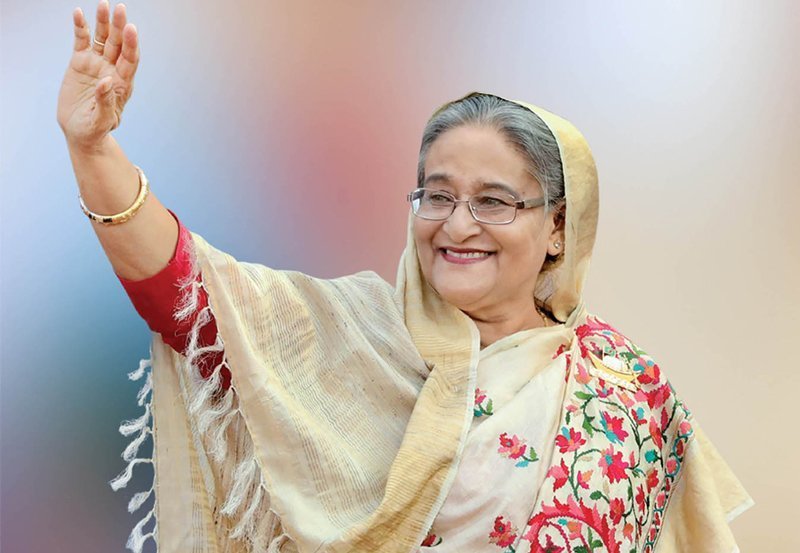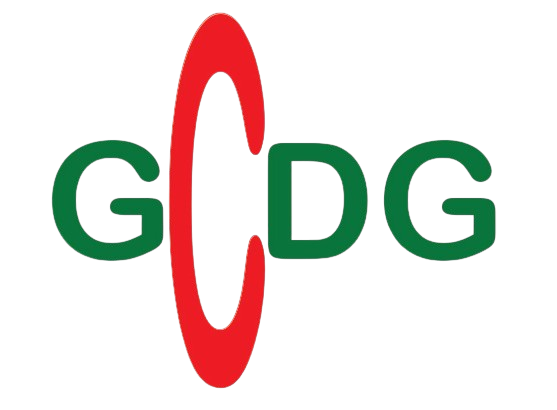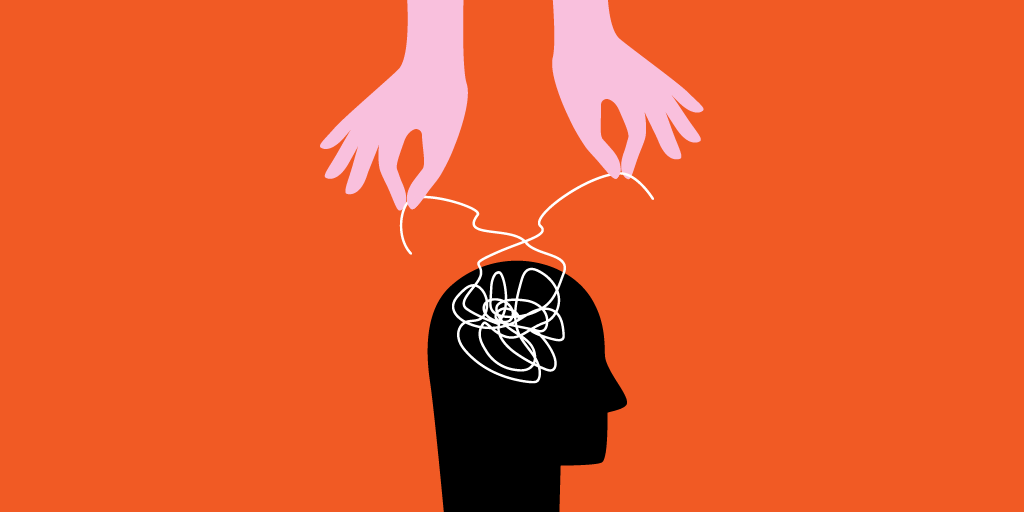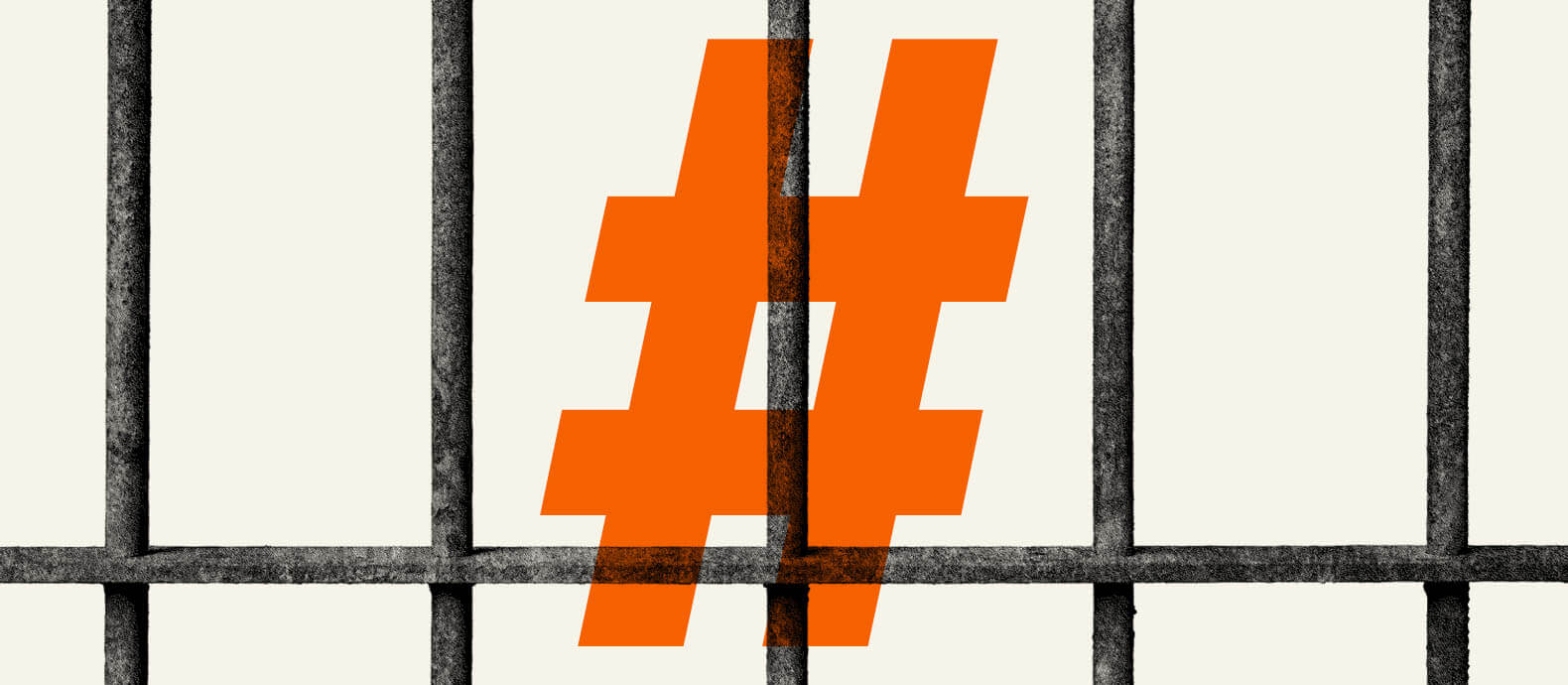Introduction The transition in Bangladesh after August 5, 2024, provides a stark illustration of how…

Sheikh Hasina: A Visionary Pathfinder And The Architect Of Transformation Of Bangladesh
Professor
Homeland Security, Elizabeth City State University, North Carolina, USA
Preface
1988. We were then students at the University of Dhaka. A devastating flood had spread across the country. Many of our friends participated in a bread-making project at the Arts Cafeteria, led by the Student Struggle Council. One morning, we heard the news that she was coming. We all waited with restless anticipation. Finally, she arrived. Thick-rimmed glasses on her eyes; a simple Dhakai saree draped on her; that serene, unblemished smile on her face. She came near our table towards the end. I was watching her from a distance. She looked at us, offered that radiant smile, and gently asked: “How are you?”
At that moment, it felt as though she was looking directly at me. I was overwhelmed. That was the first time I had seen her so close. I remember staring at her, thinking: this is the woman who was raised in the house of our Father of the Nation. Yet, even then, a strange thought crossed my mind—that despite having her people, her party, her comrades, her leaders, she was, in essence, a visionary pathfinder holding these segments to transform Bangladesh.
Often I have thought so; nowadays the thought comes even more intensely. She has been doing everything—fighting, struggling, leading movements, working tirelessly to take the nation to its Himalaya. Yet she has remained alone. Just as Edmund Hillary had Tenzing Norgay by his side, does Sheikh Hasina have someone comparable? In my judgment, while not exactly Norgay in the true sense, she assembled a strong team to supplement her efforts.
Broadly speaking, perhaps her true Tenzing has been the people of Bangladesh and her devoted workers and grassroots leaders. At the same time, there has been a massive growth of opportunists within the trajectory. True, she has always praised her party workers and leaders, but deep behind those thick-rimmed glasses, her sharp eyes must have seen through everything. And perhaps in certain solitary moments, she realized that she must reach the Himalayas for Bangladesh, with only the people and her grassroots workers and leaders as her Tenzings. That is why we so often saw that even seemingly trivial decisions, when others faltered, had to be taken by her alone. It was by her direction that many despondent faces lit up with hope. Decisions that others could have easily taken—she had to bear alone, while her party leaders and workers supplemented her efforts in the field.
This is why I call her the Visionary Pathfinder. The thought returns to me again and again.
My own conviction is this: if I were asked to choose a leader from among the current generation of politicians for the country’s welfare, I see no alternative to Sheikh Hasina. I have thought long and hard, and I conclude that the kind of desperate spirit that is necessary to lead a country exists, at present, only in her.
One thing must be clear: I am not speaking about the Awami League as a party. I am speaking about her alone. Again and again, I feel that this woman has been uniquely alone in making many of the nation’s hardest decisions. After the inauguration of the Padma Bridge, the reactions from both her supporters and her opponents only reinforced my belief.
Has Sheikh Hasina surpassed her father? The question is difficult; the answer, even harder. I know Bangabandhu came to power in a time of severe crisis—leading a war-ravaged nation back to normalcy was a monumental challenge. And he handled much of that successfully. His period was marked by a different global political order, and it was that order which conspired to take him away from us so early, to the great detriment of Bangladesh.
Yet it must be remembered that Bangabandhu came to power as an undisputed leader, with the mountain of people’s love behind him. That, however, was not the case for Sheikh Hasina. When she first came to power, the ideological foundation of the nation—the spirit of Liberation—was already contested, with countervailing forces firmly established. Her first term was won by a narrow margin, and within a constitutional framework that contradicted her own beliefs. There was much she could not do then, though surely she learned from the experience.
Introduction
Sheikh Hasina’s political journey cannot be understood merely in terms of party politics. To evaluate her legacy, one must place her against the backdrop of Bangladesh’s history of crisis, survival, and renewal.
When Bangabandhu Sheikh Mujibur Rahman came to power in 1972, he inherited a nation ravaged by war. His challenge was reconstruction and the establishment of a new state. Sheikh Hasina, however, came to power in far less favourable circumstances. By the time she entered government, the spirit of Liberation had already been weakened, and counter-ideologies had entrenched themselves in politics and society. Unlike her father, she did not ascend as an undisputed leader with unanimous public trust. Instead, she had to build her legitimacy step by step, through perseverance, endurance, and political struggle.
Her first term (1996–2001) was marked by fragile margins and structural limitations, yet she set important precedents in governance, education, women’s empowerment, and international diplomacy. Her later terms (2009–2024) were defined by consolidation: digital governance, mega-projects, expanded social safety nets, and assertive foreign policy.
This background explains why her leadership has been likened to that of a Visionary Pathfinder: she had to carry the weight of the nation’s climb almost alone, without trusted comrades comparable to the Four Leaders who once stood beside Bangabandhu.
Social Development Indicators
Let us begin the discussion with the Human Development Index and two fundamental gender-related indicators. The following chart presents data from 2005 to 2023, analyzing the trends of three measures: the Human Development Index (HDI), the Gender Development Index (GDI), and the Gender Inequality Index (GII). It should be noted that for HDI, we have used data covering the years 2005–2023; for GDI and GII, the new measures have been in use since 2015.
 From 2001 to 2025, Bangladesh’s trajectory in the Human Development Index (HDI), Gender Development Index (GDI), and Gender Empowerment Measure (GEM) reveals a clear truth: the nation’s highest achievements occurred under the leadership of Sheikh Hasina, supplemented by her efficient team. Let us analyze some of her achievements in the social sector.
From 2001 to 2025, Bangladesh’s trajectory in the Human Development Index (HDI), Gender Development Index (GDI), and Gender Empowerment Measure (GEM) reveals a clear truth: the nation’s highest achievements occurred under the leadership of Sheikh Hasina, supplemented by her efficient team. Let us analyze some of her achievements in the social sector.
Human Development Index (HDI):
The UNDP’s Human Development Reports show that during the BNP era (2001–2006), Bangladesh’s HDI scores remained stagnant at a low level. In contrast, from 2009 to 2024, under Hasina’s leadership, HDI improved steadily, lifting Bangladesh into the medium development category and raising its global rank.
Rising from only 0.525 in 2005 to 0.685 in 2023—this was not the result of mere administrative procedures, but rather of Sheikh Hasina’s personal determination and vision. She introduced the expansion of education, community clinics, and social protection policies out of her own political insight. In comparison, during 2001–2008, under the BNP and the military-backed government, progress was slow; however, during Sheikh Hasina’s tenure, there was balanced development in all three core indicators—education, health, and income.
This can be explained through Amartya Sen’s “Capability Approach.” According to this theory, HDI is not just a measure of income, but also of human “capability” (encompassing health, education, and a decent standard of living). Sheikh Hasina emphasized all three areas—free education for girls in schools, the 10 Taka per kg rice program, and the expansion of rural healthcare.
Gender Development Index (GDI): The Gender Development Index reveals an even sharper difference. BNP’s rule left women marginalized, with high maternal mortality, low female literacy, and minimal participation in the workforce. Under Hasina, Bangladesh achieved historic progress: the maternal mortality rate dropped dramatically; girls’ school enrollment outpaced that of boys; and women entered the workforce in record numbers—particularly in the garment, banking, and ICT sectors.
Between 2015 and 2023, women’s empowerment reached an unprecedented level. Women’s education, employment, and entry into leadership positions were all the result of Sheikh Hasina’s singular policy decisions. In 2015, Bangladesh’s score on this indicator was 0.89, a result of the women-friendly policies implemented by Sheikh Hasina since 2009. Most significantly, by 2023, it increased to 0.91. Girls’ enrollment in primary and secondary education surpassed that of boys. Maternal mortality dropped from 320 per 100,000 in 2001 to 136 in 2023. Women’s life expectancy became higher than men’s (74 years vs. 71 years). Through continuous progress in GDI, Bangladesh emerged as one of the leading countries in South Asia. Amartya Sen praised Bangladesh highly, noting that it had outpaced India.
According to the Beijing Platform for Action (1995) and the GDI framework, advancement in gender equality is possible through state policy. Sheikh Hasina proved that, with political will, rapid transformation is possible even in a traditionally patriarchal society.
It should be noted that in these achievements, there was certainly a strong effort and efficiency on the part of her team, while both the political and philosophical leadership were carried out by her.
Sheikh Hasina herself embodied women’s empowerment. As the longest-serving female head of government in the world, she not only set an example but also institutionalized change, introducing reserved seats for women in parliament, increasing their presence in local government, the judiciary, the police, and the armed forces.
Gender Inequality Index (GII):
During 2001–2006, women’s political representation was limited (primarily through reserved seats). In Sheikh Hasina’s era, however, women have risen to leadership positions in the Secretariat, the judiciary, the armed forces, the police, and diplomacy. In local government (Union Parishads, municipalities, city corporations), women achieved visible direct electoral representation. At the national level, Bangladesh became the only country in South Asia where all four top positions—Prime Minister, Speaker, Leader of the Opposition, and Deputy Leader of the House—were held by women.
From 0.520 in 2015 to 0.487 in 2023, this index indicates that inequality declined primarily due to her policy stances. She effectively incorporated women’s political participation and health rights into state policy. According to Nancy Fraser’s “Redistribution and Recognition” thesis, equality is not only about economics, but also about social and political recognition. Sheikh Hasina ensured women’s political empowerment through both constitutional structures and policy measures.
Such remarkable improvements in both GDI and GII are, in fact, the result of far-sighted, women-friendly leadership thinking, supplemented by an efficient team comprised of both political and bureaucratic, as well as technical, members.
The progress in these three indices is a testament to Sheikh Hasina’s personal achievements. She was the Visionary Pathfinder—who, despite receiving little meaningful support from the political leadership around her, lifted the nation to the summit of development. And in a conservative country like Bangladesh, anyone working for women’s empowerment in positions of leadership must inevitably walk a resolute path.
In summary, the graphs of HDI, GDI, and GEM all tell the same story: Bangladesh experienced upward movement during Hasina’s era, while others faltered or regressed. These were somewhat collective party achievements, while Haaina’s political leadership made significant contributions to decision-making for these transformations. These were her personal achievements—her vision, her directives, her determination.
Thus, just as Joan of Arc carried the spirit of her people, Sheikh Hasina became the Joan of Arc of Bangladesh’s social transformation when she had to face significant barriers embedded in a patriarchal social structure like Bangladesh, and she was vastly successful because the significant leaders from her party provided some fundamental intellectual or policy support to uphold her.
Law and Order
We present a comparative analysis of crime statistics in Bangladesh to examine the differences between various regimes. When BNP was in power (2001–2006), homicide, robbery, rape, dacoity, and theft rates were alarmingly high. Political violence, extortion, and criminal patronage were rampant.
 Under Sheikh Hasina (2009–2024), these trends reversed. Homicide rates steadily declined, as did robbery and dacoity. The introduction of community policing, the launch of the 999 emergency service, and the modernization of the police force all contributed to a significant reduction in violent crime. Special tribunals and ICT-based monitoring made justice more accessible and effective.
Under Sheikh Hasina (2009–2024), these trends reversed. Homicide rates steadily declined, as did robbery and dacoity. The introduction of community policing, the launch of the 999 emergency service, and the modernization of the police force all contributed to a significant reduction in violent crime. Special tribunals and ICT-based monitoring made justice more accessible and effective.
Women’s safety, a crucial dimension, saw notable progress. The introduction of harsher penalties for sexual violence, stronger enforcement of anti-harassment laws, and institutional mechanisms such as the One-Stop Crisis Centers created an environment of greater accountability.
In contrast, within a year of the Interim Government (2024–2025), crime indicators began to rise again. Killings, robberies, and sexual violence increased—signalling administrative weakness, political illegitimacy, and a collapse of accountability.
Regime-wise Comparative Analysis:
BNP Era (2001–2006): Crime rates reached their highest levels; law enforcement was politicized and ineffective.
Hasina Era (2009–2024): Crime rates consistently reduced; law and order stabilized through reform and modernization.
Interim Government (2024–2025): Sharp deterioration in a short span; law enforcement weakened by political chaos.
The conclusion is evident: Sheikh Hasina was the true architect of law and order in Bangladesh. Without her leadership, the country has again slid toward lawlessness.
Corruption Trends: Was the Hasina Regime Worst?
Corruption Perception Index
Transparency International’s Corruption Perceptions Index (CPI) and complementary data reveal a clear pattern across regimes. In the chart below, we have also made a forecast for 2025-2030 to understand what would happen if these three regimes were in power with different capacities.

Analysis: Corruption Perception Index (CPI), 2001–2030
- BNP Period (2001–2006):
• The CPI score rose from 8 to 20.
• Although this was a slight improvement, the score remained extremely low, indicating widespread corruption and weak institutional structures.
• In international rankings, Bangladesh remained one of the most corrupt countries in the world. - Awami League Period (2009–2024):
• The CPI score started at 24 and improved to 29–28 during the mid-years.
• However, in the later period (2019–2024), the score again dropped to 21–23.
• Nevertheless, the key achievements during this time were institutional reform, digital governance, suppression of terrorism, and women’s empowerment.
• Although the score fluctuated, the average performance was significantly higher than during the BNP era. - Forecast 2025–2030:
- Awami League (AL): The score is projected to rise consistently from 24 to 34. This indicates that under Sheikh Hasina’s continued leadership, Bangladesh would have become more governance-oriented and institutionally mature. The CPI trend under AL demonstrates “Institutional Maturity & Rule of Law Strengthening.”
- BNP: According to the forecast, during 2025–2030, the score will range from 22 to 30. This reflects a weaker trend compared to AL; despite some improvement, there will be only limited progress in controlling corruption.
- Interim Government (2024–2030): The CPI score is expected to fall from 20 to just 15. This directly indicates that under the interim regime, corruption has risen to an unprecedented and alarming level.
The primary causes of this decline are the crisis of political legitimacy, administrative bias, and instability.
Overall Understanding of Corruption Perception Index:
- BNP Period (2001–2006): Failed to control corruption; CPI consistently remained at the bottom. Bangladesh was ranked as the most corrupt country in the world for five consecutive years. CPI scores were the lowest globally, reflecting systemic corruption, rent-seeking, and the collapse of institutional checks.
- Sheikh Hasina’s Period (2009–2024): Relative improvement in CPI; Bangladesh gained a degree of international credibility. The CPI score steadily improved. From 2009 onwards, Bangladesh left behind its position at the bottom of the global ranking. Institutional reforms—such as strengthening the Anti-Corruption Commission, digitizing financial flows, enhancing public procurement transparency, and expanding e-governance—contributed to this improvement. Although there were ups and downs, the trend was unmistakable: Bangladesh became less corrupt under Hasina’s rule compared to the BNP era.
- Interim Government (2024–2030): Massive expansion of corruption; CPI score deteriorated drastically. Within the very first year of the interim regime, forecasts suggest CPI scores are falling again. The absence of political legitimacy, the politicization of institutions, and the resurgence of rent-seeking groups have already begun to erode the gains of the Hasina period.Thus, in the global struggle for transparency, Sheikh Hasina stands out as Bangladesh’s Anti-Corruption Vanguard.
Below is another chart illustrating a comparative scenario of corruption by regimes with a forecast.
Bribery, Illicit Financial Flow, Misappropriation, & Money Laundering
Here, based on the IMF and World Bank’s Bribery Incidence indicators, the Global Financial Integrity and UNODC estimates of Illicit Financial Flows (such as trade misinvoicing), and the BASEL/AML (money laundering tendency) indices, a forecast-based illustration has been presented.
 Analysis: Corruption Trends in the 2025–2030 Forecast
Analysis: Corruption Trends in the 2025–2030 Forecast
- Awami League (AL): A consistently downward trend is visible in all indicators.
Between 2025 and 2030, Illicit Financial Flows (IFF) declined from 59% to 54%.
Bribery falls from 58% to 53%, Misappropriation from 56% to 51%, and Laundering from 54% to 49%.
This clearly demonstrates that under AL governance, a structured process of corruption reduction was implemented, where institutional control and digital transparency played a crucial role in reducing corruption. - BNP: A moderate upward trend is observed in all indicators.
IFF rises from 71% to 76%, Bribery from 68% to 73%, Misappropriation from 66% to 71%, and Laundering from 65% to 70%.
Although corruption levels are significantly higher compared to those in AL, during BNP’s rule, corruption remained stable yet continued to rise.
This indicates that BNP’s governance is ineffective in controlling corruption; rather, due to electoral interests and administrative weakness, corruption becomes institutionalized. - Interim Government (2024–2030): The most alarming trend is visible under the interim regime.
IFF rises from 86% to 90%, Bribery from 84% to 88%, Misappropriation from 82% to 86%, and Laundering from 79% to 84%.
This suggests that under the interim government, corruption will expand significantly and state control will erode.
The crisis of legitimacy, politicization of administration, and absence of accountability will drive corruption to the highest level in the nation’s history.
In conclusion about these four items, we have the following significant points:
AL: Downward corruption trend; symbol of institutional reform and good governance.
BNP: Gradual rise in corruption yet remaining at a high level— “Controlled Corruption.”
Interim: Explosion of corruption, institutional collapse, and governance of impunity— “Corruption Anarchy.”
From this analysis, it is clearly evident that the most effective and corruption-controlling leadership for Bangladesh is that of Sheikh Hasina and the Awami League.
We would like to use another important indicator.
Basel AML Index – AML/CFT Risk
The Basel AML Index measures two things: Money Laundering (ML) and Terrorist Financing (TF) risk. In other words, it reflects a country’s vulnerability to illegal financial activities, including money laundering, terrorist financing, and inadequate control mechanisms.
Explanation of the Score:
- Score Range: 0 to 10
• 0 = Low Risk (i.e., the country is very strong in AML/CFT control)
• 10 = High Risk (i.e., the country is very weak in AML/CFT control)
Sources / Components of the Index:
The Basel AML Index is derived from around 18 different sources (such as the World Bank, FATF, Transparency International, WEF, etc.), taking into account the following dimensions:
- Corruption risk
• Financial transparency & standards
• Public transparency & accountability
• Political/legal risk
• AML/CFT framework
Therefore, in this context, the term “risk” refers to money laundering and corruption risk, not income or economic growth risk.
The Basel AML Index measures the risk of money laundering (ML) and terrorist financing (TF), with scores ranging from 0 (low risk) to 10 (high risk). It is not about income risk; rather, it is a composite index that captures corruption, financial transparency, the political/legal environment, and AML/CFT institutional strength.
 Bangladesh’s record on this index illustrates the same political contrast as other indicators:
Bangladesh’s record on this index illustrates the same political contrast as other indicators:
BNP Era (2001–2006, scenario-based): Although official Basel data is available only from 2012, global corruption rankings and financial integrity assessments strongly suggest that BNP’s period was marked by extremely high AML/CFT risk. Scenario estimates place Bangladesh at scores between 7.0–8.5, signifying the highest levels of vulnerability.
Awami League under Sheikh Hasina (2012–2024, official data): From a score of 6.28 in 2012, Bangladesh gradually improved, reaching 5.62 in 2024. Despite fluctuations, the long-term trend was positive. Institutional reforms—such as strengthening banking regulations, introducing digital financial systems, and aligning with FATF standards—have helped Bangladesh lower its risk profile.
Interim Government (2025, forecast): Forecast scenarios show a sharp reversal. The risk score rises again to 6.20, reflecting weakening institutional checks, political instability, and administrative chaos.
Comparative Insight: BNP Era: The country stood at the highest global risk, driven by entrenched corruption and financial opacity. Hasina Era: Bangladesh steadily reduced its vulnerability, proving that reform, regulation, and political will could yield measurable progress. Interim Government: In less than a year, the risk trend has shifted sharply upward, signalling a resurgence of corruption, money laundering, and illicit financial flows.
In conclusion, the Basel AML Index reinforces the same lesson: Sheikh Hasina’s leadership was indispensable for reducing corruption and AML/CFT risks; without her, Bangladesh is once again sliding into high-risk territory.
Long-Term Loss Analysis (1991–2030)
One final issue needs to be discussed here.
Not only the corruption scores themselves, but we must also consider the financial losses Bangladesh has suffered as a country because of corruption. In the chart below, using both actual and forecast models, we have illustrated the extent of economic losses Bangladesh has experienced—and is projected to experience—due to corruption during the period 1990–2030.
 When we examine long-term losses due to corruption and illicit financial flows across regimes (1991–2030), a striking pattern emerges.
When we examine long-term losses due to corruption and illicit financial flows across regimes (1991–2030), a striking pattern emerges.
BNP Rule (1991–1996; 2001–2006): Losses were consistently high and rising. Between 1991 and 1996, the yearly outflow increased from approximately $50 billion to $55 billion. The second BNP term (2001–2006) was even worse, with losses increasing from $60 billion to $70 billion. These figures align with international reports that placed Bangladesh at the bottom of global corruption rankings during that period.
Awami League Rule (1996–2001; 2009–2024): Losses decreased significantly compared to the BNP periods. Between 1996 and 2001, the yearly figure was reduced to 38–40 billion USD, indicating greater institutional control and transparency. Between 2009 and 2024, despite challenges, losses remained relatively stable, hovering between $50 billion and $52 billion USD. This period saw improvements in digital governance, banking transparency, and the implementation of large-scale infrastructure projects with greater financial discipline.
Interim Governments (2007–2008; 2024–2030 forecast): In both interim phases, corruption and illicit financial losses spiked dramatically. In 2007–2008, outflows increased to $65–$68 billion USD. In the ongoing interim regime (2024–2030, forecast), losses rise alarmingly from $73.8 billion in 2025 to almost $100 billion by 2030. This trend reflects institutional collapse, lack of political legitimacy, and resurgence of rent-seeking elites.
Comparative Assessment:
BNP: Institutionalized corruption; steady upward losses, marking the darkest chapters.
Awami League: Relative stability and consistent improvement, proving stronger governance and reforms.
Interim Governments: Chaotic spikes and the worst forecasts, showing the collapse of accountability.
The long-term analysis makes it clear: Sheikh Hasina’s leadership was the decisive factor in containing corruption and illicit financial flows. Without her, and with the real team working for her, Bangladesh faces a catastrophic financial hemorrhage.
Joan of Arc and the Visionary Pathfinder of the Journey
Based on the data analyzed, I find striking parallels between Sheikh Hasina and Joan of Arc. This woman has stood face to face with death countless times, yet even in the shadow of death, she has saved her nation. The August 21 grenade attack, at least nineteen assassination attempts, international conspiracies, and finally the domestic and global plot of August 5, 2024, to eliminate her, through all of this, she never gave up. She not only survived but also led the country forward.
Just as Joan of Arc, a woman, provided military leadership in a male-dominated society, Sheikh Hasina too has become a symbol of strength and capability for women and marginalized people in the male-centric politics of South Asia.
She can rightly be called the “Visionary Pathfinder” because, unlike Bangabandhu, she only had a strong supporting team beside her on the path of development. Whether it was the construction of the Padma Bridge with self-financing, the anti-terrorism operations, or Bangladesh’s assertive position in international diplomacy, she had to make those decisions almost entirely on her own.
On one hand, she lifted the nation to the summit of development; on the other, she often remained alone, isolated by the absence of collaborative leadership. Even today, when the Awami League is in crisis, and she herself is under threat, she still stands alone with her team of advisors, yet continues to lead. Every form of misdeed, controversy, or excess committed during the League’s rule has ultimately fallen upon her shoulders, and she carried the burden with the team on her side.
This may, in part, stem from Sheikh Hasina’s own political philosophy, which deserves a deeper discussion later.
In sum, two metaphors—Joan of Arc (the courageous warrior woman) and the Visionary Pathfinder (the leading burden-bearing guide)—together capture the essence of Sheikh Hasina’s leadership.
Conclusion
To equate the regimes is to deny reality. The historical evidence and indices—HDI, GDI, GEM, CPI, the Basel AML Index, and assessments of financial loss due to corruption—all demonstrate that Bangladesh’s greatest strides occurred during Sheikh Hasina’s leadership. Sheikh Hasina’s legacy stands as a testament to courageous and visionary leadership. Like Joan of Arc, she has led with determination and moral clarity, transforming Bangladesh through her policies of reform, inclusion, and progress. Her journey reflects not solitude, but strength—the will of a leader who turned challenges into opportunities and guided a nation toward transformation. In every measure of development—social, economic, and institutional—her leadership remains the cornerstone of Bangladesh’s modern identity.
She was not merely a head of government; she was the Joan of Arc of Bangladesh, carrying the spirit of the people against overwhelming odds. She was also the Visionary Pathfinder, climbing tirelessly toward the Himalayan peak of national development, often with a few genuine comrades at her side, and sometimes even betrayed by those closest to her.
The BNP years institutionalized corruption and lawlessness. The interim governments represent episodes of collapse, chaos, and unrestrained plunder. By contrast, Sheikh Hasina’s years (1996–2001, 2009–2024) stand as eras of stability, reform, and progress.
Yes, there were challenges, fluctuations, and imperfections. Yet the overarching truth remains: without Sheikh Hasina, Bangladesh slides into corruption, disorder, and financial disaster; with her, the country advances in human development, gender empowerment, law and order, and institutional strength.
In the grand narrative of Bangladesh, Sheikh Hasina must be remembered not only as the daughter of Bangabandhu Sheikh Mujibur Rahman, but also as a leader in her own right—who bore the burden of history with resolute courage and whose spirit of perseverance carried the nation forward when others faltered.
References:
United Nations Development Programme. (2025). Human Development Report 2025: Statistical Annex – Table 1 (HDI & components). Retrieved from https://hdr.undp.org
UNDP Data Futures Exchange. Bangladesh country page. Retrieved from https://hdr.undp.org
UNDP. (2025). HDI Trends 1990–2023 (Comparable Series). Retrieved from https://hdr.undp.org
UNDP. (2025). Gender Development Index (GDI) – Statistical Annex (Table 4). Retrieved from https://hdr.undp.org
UNDP. (2025). Gender Inequality Index (GII) – Statistical Annex (Table 5). Retrieved from https://hdr.undp.org
UNDP. (2025). Human Development Data Center – Technical notes & methodology. Retrieved from https://hdr.undp.org
Transparency International. (2024). Corruption Perceptions Index (CPI) 2023. Retrieved from https://www.transparency.org/en/cpi
Transparency International. (2024). Bangladesh country page (CPI 2024). Retrieved from https://www.transparency.org
Basel Institute on Governance. (2024). Basel AML Index – 13th Public Edition. Basel, Switzerland. Retrieved from https://index.baselgovernance.org
Basel Institute on Governance. (2012–2023). Basel AML Index Archive Reports. Retrieved from https://index.baselgovernance.org
United Nations Office on Drugs and Crime (UNODC). Global Study on Homicide. Retrieved from https://dataunodc.un.org
World Bank. Intentional homicides (per 100,000 people) – Bangladesh (Indicator SH.STA.HOMI.P5). Retrieved from https://data.worldbank.org
World Bank. (2022). Enterprise Surveys – Bribery incidence (% of firms experiencing at least one bribe request). Retrieved from https://www.enterprisesurveys.org
Global Financial Integrity (GFI). (2019). Illicit Financial Flows to and from Developing Countries: 2006–2015. Washington, DC: GFI.
Global Financial Integrity (GFI). (2020). Trade-Related Illicit Financial Flows in 134 Developing Countries 2008–2017. Washington, DC: GFI.
Global Financial Integrity (GFI). (2021). Illicit Financial Flows: Methodology Update. Washington, DC: GFI.
The Daily Star. (2025). Bangladesh’s latest HDI takeaways. Dhaka.
Prothom Alo. (2025). Bangladesh CPI 2024 coverage. Dhaka.




Comments (0)